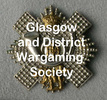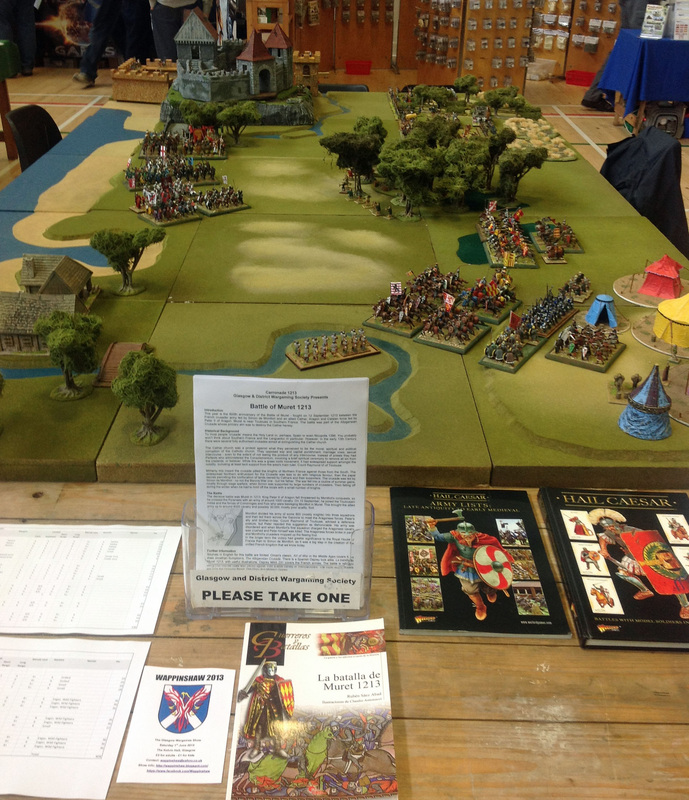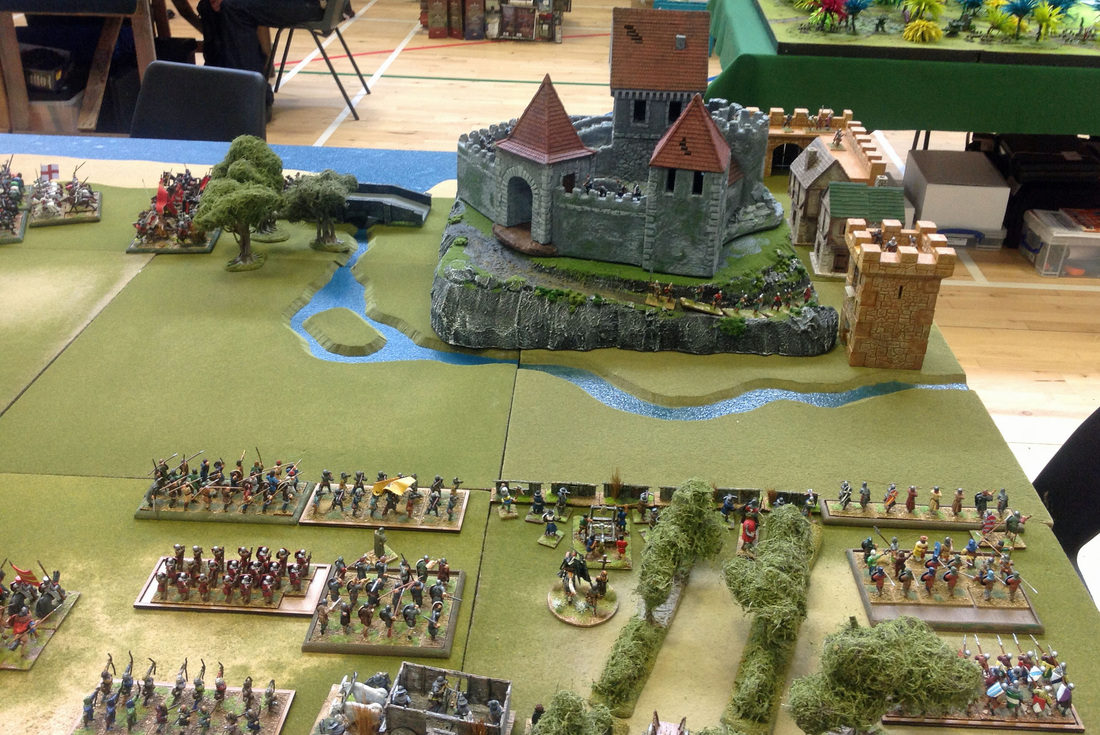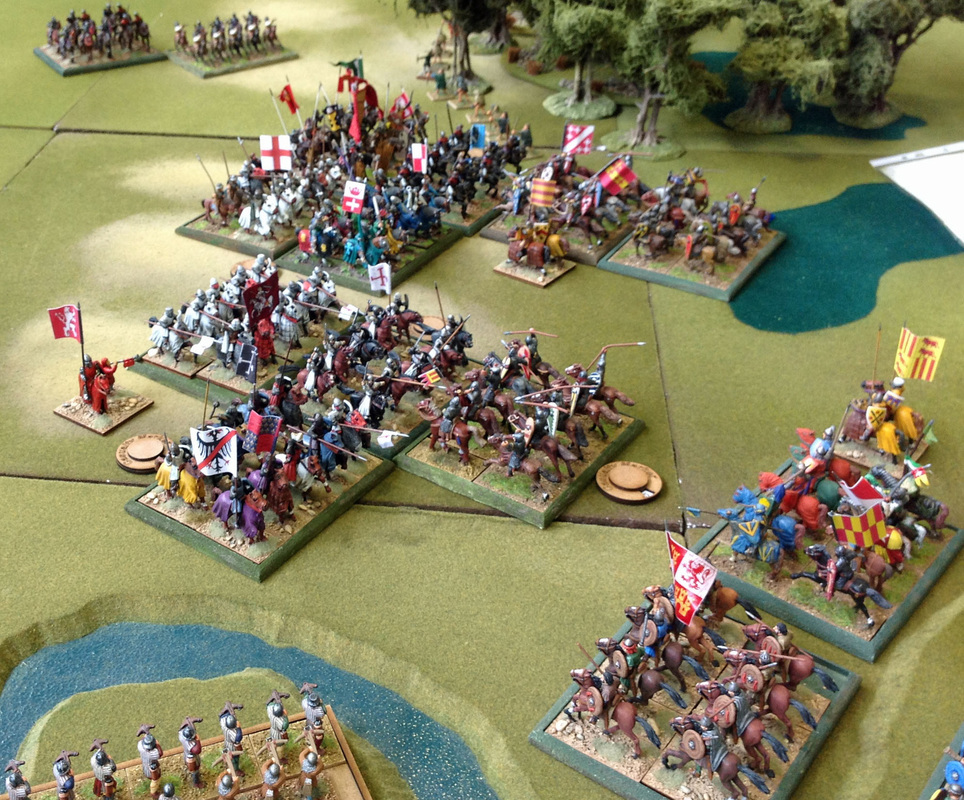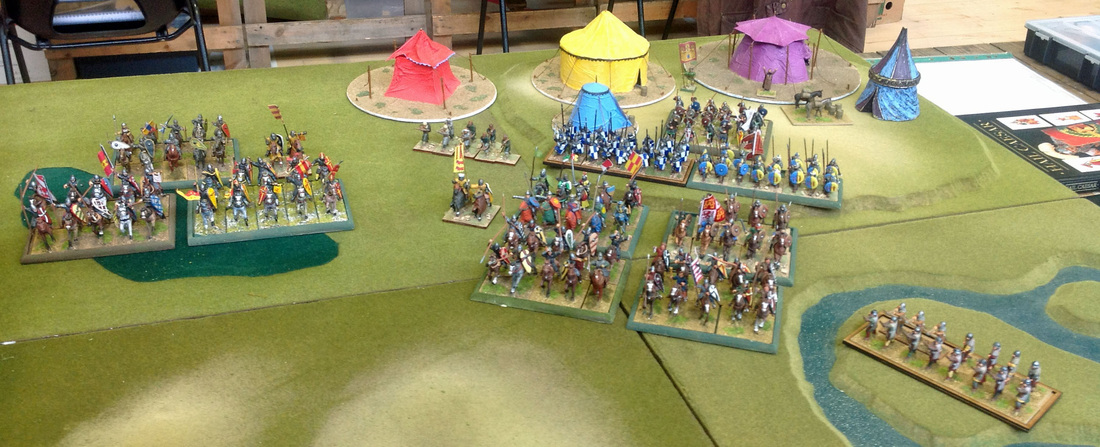|
Carronade 1213
Battle of Muret 1213 Introduction This year is the 800th anniversary of the Battle of Muret - fought on 12 September 1213 between the French crusader army led by Simon de Montfort and an allied Cathar, Aragon and Catalan force led by Peter II of Aragon. Muret is near Toulouse in Southern France. The battle was part of the Albigensian Crusade whose primary aim was to destroy the Cathar heresy. Historical Background To most people 'crusade' means the Holy Land or, perhaps, Spain or even Nicopolis 1396. You probably won’t think about Southern France and the Languedoc in particular. However, in the early 13th Century there were several fully authorised crusades aimed at extinguishing the Cathar church. The Cathar church was a protest against what they perceived to be the moral, spiritual and political corruption of the Catholic church. They opposed war and capital punishment, marriage vows, sexual intercourse - even to the extent of not eating the product of any intercourse. Instead of priests they had Perfects who administered the Consolamentum, involving a brief spiritual ceremony to remove all sin from the credente, or believer. While this was a grass roots movement, it had widespread support amongst the nobility, including at least tacit support from the area's main ruler, Count Raymond VI of Toulouse. Militarily this meant the crusade pitted the knights of Northern France against those from the South. The widespread Northern enthusiasm for the Crusade was less to do with religious fervour, than the papal decree permitting the confiscation of lands owned by Cathars and their supporters. The crusade was led by Simon de Montfort - no not the Barons War one - but his father. The war fell into a routine of summer gains, mostly through siege warfare, when Simon was supported by large numbers of crusaders. Then falling off during the winter when he had to hold off the locals with a small number of knights. The Battle The decisive battle was Muret in 1213. King Peter II of Aragon felt threatened by Montfort's conquests, so he crossed the Pyrenees with an army of around 1000 cavalry. On 10 September, he joined the Toulousain militia and the forces of Comminges and Foix who were besieging Montfort in Muret. This brought the allied army up to around 4000 cavalry and possibly 30,000, mostly poor quality, foot. Montfort divided his army of some 800 (mostly knights) into three squadrons and then led them across the Garonne to meet the Aragonese forces. Peter's ally and brother-in-law, Count Raymond of Toulouse, advised a defensive posture, but Peter rejected this suggestion as dishonorable. His army was disordered and when Montfort's first squadron charged the Aragonese cavalry was crushed and Peter himself was killed. The Aragonese forces broke in panic and Montfort's crusaders mopped up the fleeing foot. In the longer term the victory had greater significance to the Royal House of France than to Simon de Montfort, as it was a big step in the creation of the unified French kingdom that we know today. Further Information Sources in English for this battle are limited. Oman's classic, Art of War in the Middle Ages covers it, as does Jonathan Sumption’s, The Albigensian Crusade. There is a Spanish Osprey look alike, La batalla de Muret 1213, with useful illustrations. Osprey MAA 231 covers the French armies. The battle is refought using Hail Caesar rules with 28mm figures from a wide variety of manufacturers. The more recent models are from the Gripping Beast, Old Glory and Mirleton ranges. |
Proudly powered by Weebly
